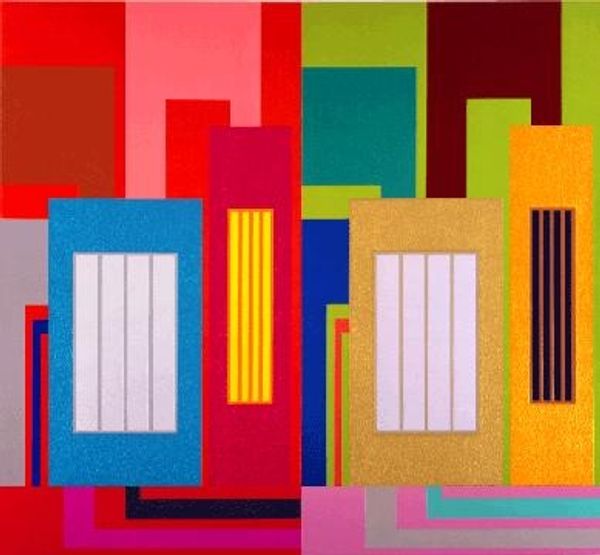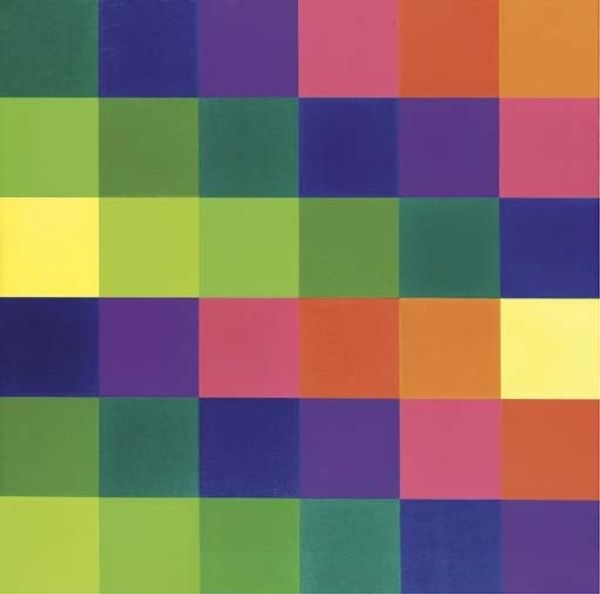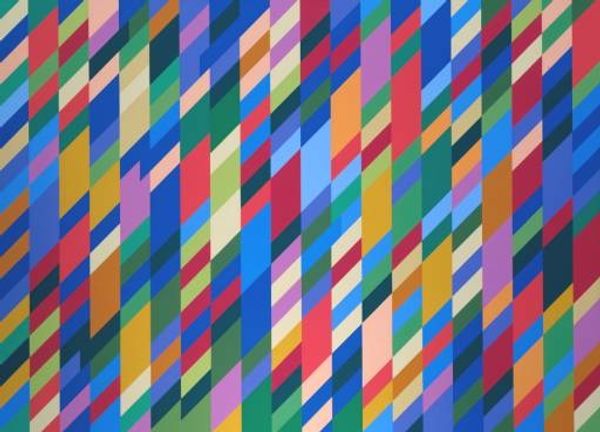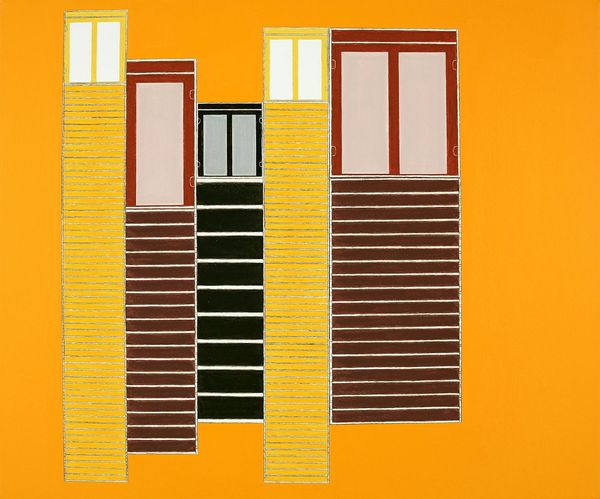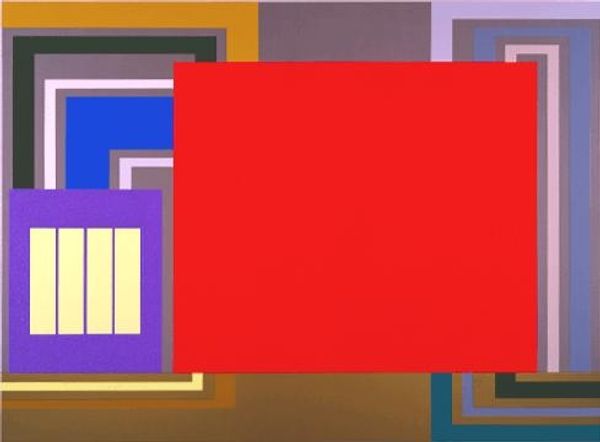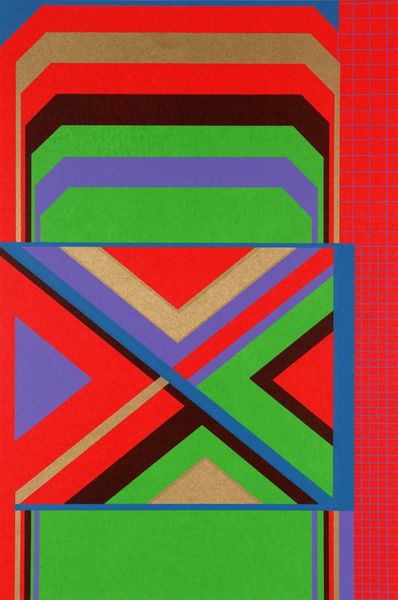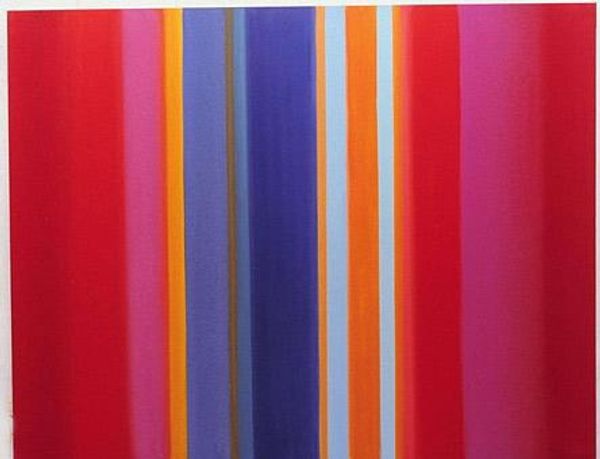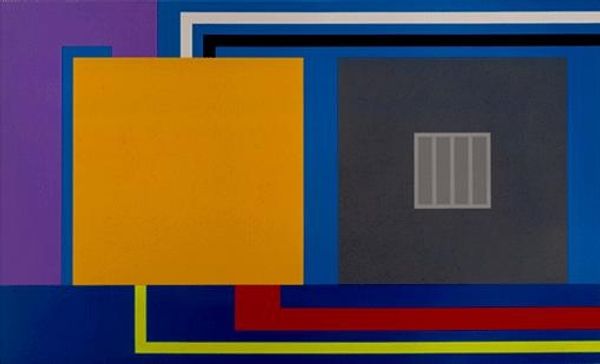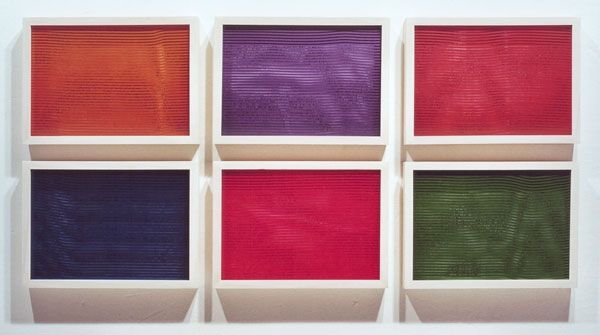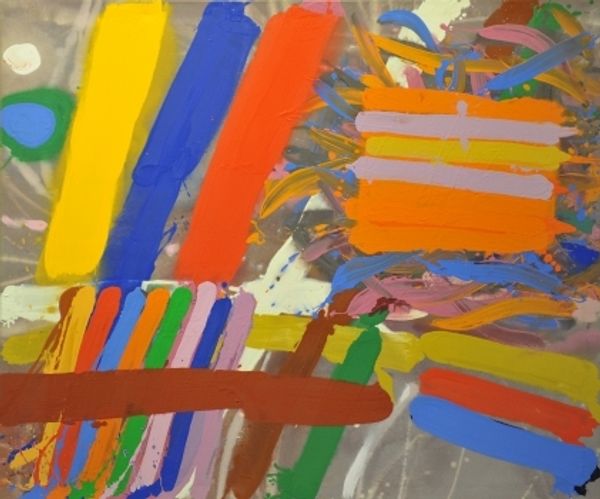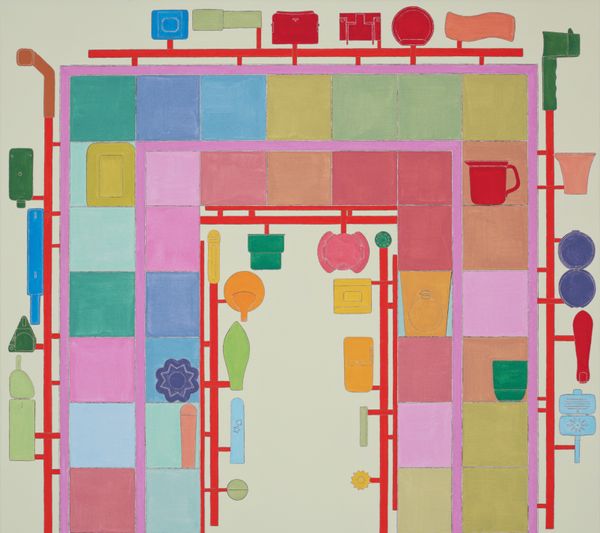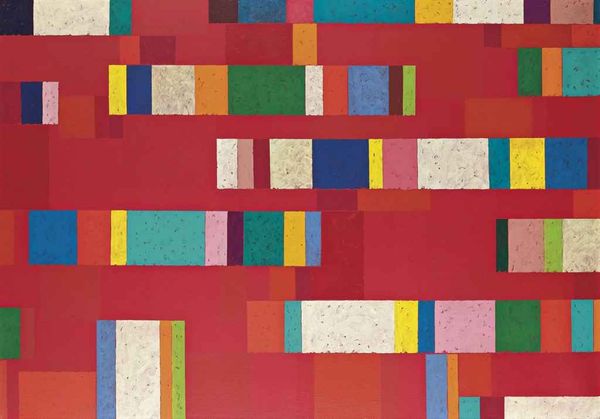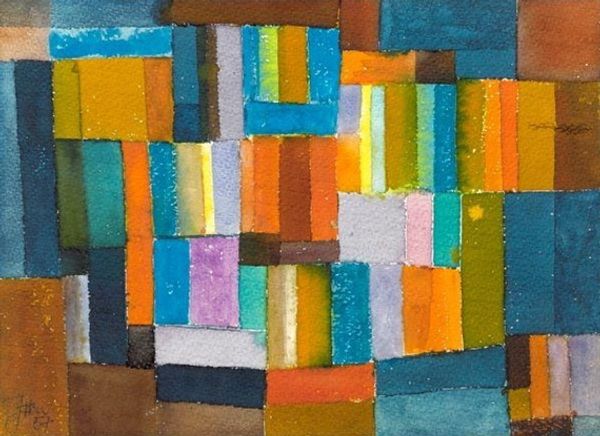
Copyright: Peter Halley,Fair Use
Editor: This is Peter Halley’s “The Time Machine” from 2002, made using acrylic paint. The blocks of intense colors feel both playful and strangely isolating. What jumps out to you in this work? Curator: I'm drawn to the stark geometry and the juxtaposition of colors. Halley is interested in how geometric forms, which he refers to as "prisons" and "cells," function within a larger social structure. Note the texture and the flatness, how each shape interacts with the other. What meaning can you derive? Editor: It seems to play with the idea of confinement and connection – the cells all abut each other, sharing edges. Is Halley suggesting something about the human condition? Curator: One could interpret it that way. His formalism, though, uses geometry as language. Focus on how the color relationships create tension and balance. See the complementary colors or even contrasting textures and how the light bounces off them. The glossy textures versus matte colors—notice their spatial effect. It’s more than just the message it’s the components of it. Editor: So the blocks of colors aren’t just containers but compositional elements? Curator: Precisely. Halley manipulates these elements to create a visually engaging space. How do the internal vertical bars in the "cells" modify your interpretation of their containing shape? Does the title of the painting influence your understanding of Halley's work? Editor: Yes, the bars within each color add this sense of depth that without them I would not find in the work, almost creating a world within each 'cell'. Thanks for clarifying that for me; I never considered it that way before. Curator: It is interesting how pure, basic elements such as forms and colours evoke so much interpretation. Hopefully our close look expands an appreciation for the compositional decisions involved.
Comments
No comments
Be the first to comment and join the conversation on the ultimate creative platform.
